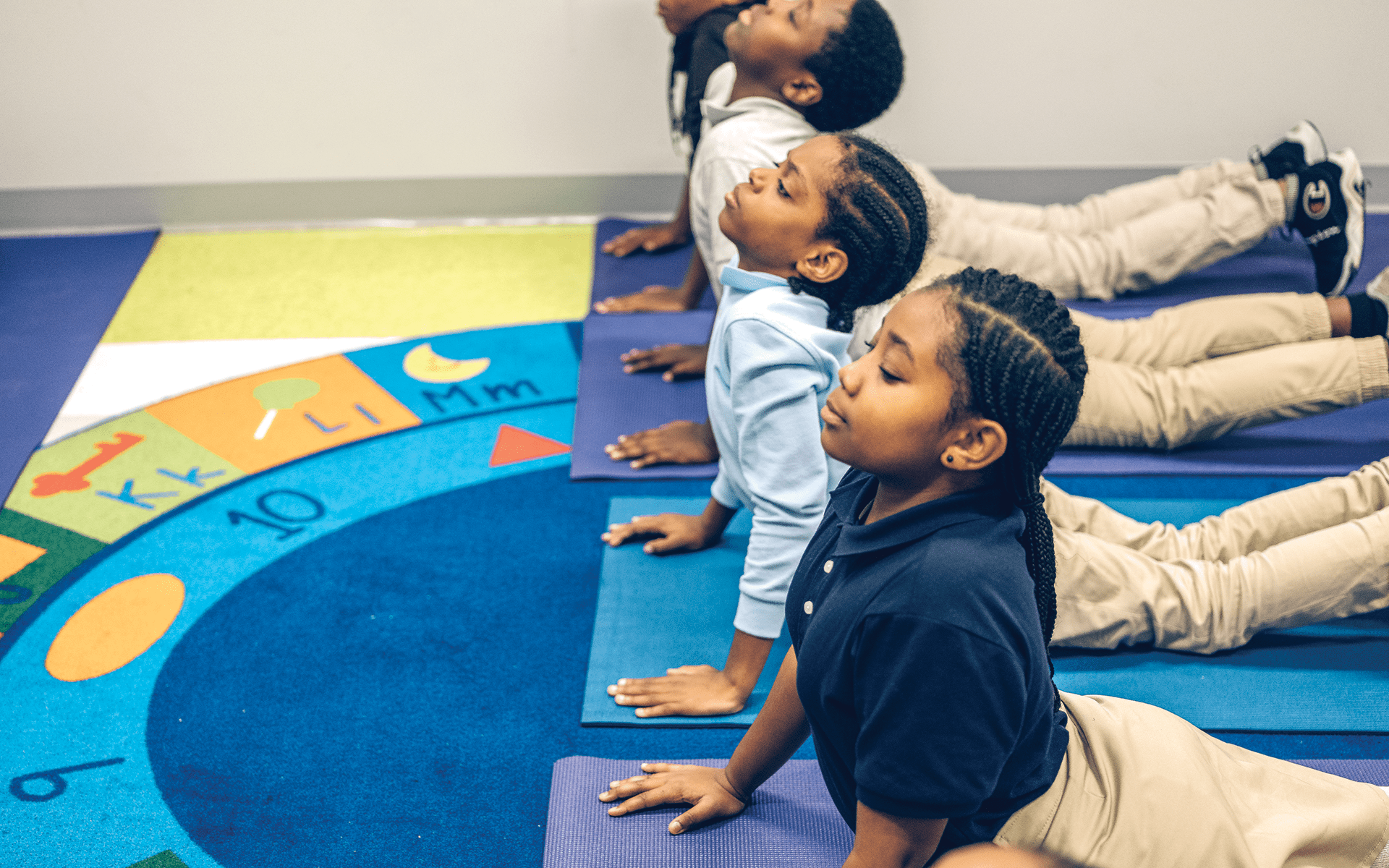The MYRIAD Project —a collaboration involving investigators from 5 universities in England and Penn State—set out to investigate whether mindfulness training can have the same positive effects in adolescence as their research has shown for adults. Exploring whether school-based mindfulness training could improve the mental health of students aged 11-14, it spanned seven years, involving more than 28,000 children, 100 schools, 650 teachers. The work collected 20 million data points and included the largest randomized controlled trial of school-based mindfulness to date. The researchers found that universal school-based mindfulness training did not improve student mental health and may have had negative outcomes for students with existing or emerging mental health difficulties.
Here are 5 takeaways from the new school-based mindfulness intervention study:
1. The mindfulness training employed in this study did not help young people with their mental health or well-being
The mindfulness curriculum was shown to be no more helpful than the standard social-emotional teaching in the schools. The training was developed by the Mindfulness in Schools Project and was taught by school teachers, after they had first learned mindfulness for themselves and then attended a four-day training to teach mindfulness to students in 10 sessions of 30-50 minutes.
According to Mark Greenberg, Founding Director, Edna Bennet Pierce Prevention Research Center, Pennsylvania State University, “The MYRIAD project carefully tested the effects of a brief mindfulness intervention for early teens and found it to have no impact on preventing mental health problems or promoting well-being. In order to improve well-being for young people, it is likely we need to make broader systemic changes in schools that both teach them new coping skills and support staff to create environments where youth feel valued and respected.”
2. The mindfulness study involved suggesting to students that they practice at home, which they did not do
The researchers posit that the most likely explanation for the fact that the mindfulness application did not improve student mental health is that very few students (less than 20%) took any interest in doing the home practice—a key part of the program. Based on the results of this trial, a key takeaway for the design of future mindfulness programs for children is that programs are likely to be more effective if they are co-designed with young people and involve much more in-depth training and support for teaching mindfulness well. The model of having school teachers, with very little mindfulness practice experience or training, teaching mindfulness to teens and then expecting those kids to practice at-home mindfulness on their own is ineffective.
3. The teachers themselves benefitted from the mindfulness training, but the intervention itself proved ineffective
Teachers who underwent the mindfulness training reported lower levels of burnout than teachers who didn’t. Since mindfulness training has already been shown to be beneficial for adult mental health, it may not be surprising that the teachers’ mindfulness training intensives benefited them.
4. The program showed an overall improvement in the “school climate” or the quality and character of school life, values, and relationships
The mindfulness training improved the school climate (for example, an atmosphere of mutual respect) compared with the comparison group, as described by the teachers who took part. An improved school climate is associated with better student mental health. Researchers surmise that while students did not practice at home, by and large, what happened in the classroom may well have benefitted the quality of the classroom overall.
5. It was further confirmed that mental health in adolescents is a growing challenge
In MYRIAD’s initial survey of almost 27,000 11- to 14-year-olds in 85 schools between 2016 and 2018, over 33% of young people reported significant social-emotional-behavioral problems and depressive symptoms. Certain groups were more likely to report problems: girls, older teenagers, those living in urban areas and areas of greatest poverty and deprivation.
The results are shared in great detail both online at MYRIAD and in 7 papers comprising a special issue of British Medical Journal—Evidence-based Mental Health. MYRIAD has worked with a group of young people from schools that took part in the trial to make a film that provides their perspective on mental health and the role of schools. In addition, MYRIAD has also recorded a series of podcasts—Changing States of Mind—for teachers and students.
In the months since the MYRIAD report came out, I took the time to interview some of the key people involved and at the periphery to gather their view of what else we can learn from this immense study.
Read More
A Recent Study Found a School-Based Mindfulness Program Doesn’t Work—Let’s Unpack That
Researchers and key figures reflect on the results and implications of one of the largest studies on mindfulness in schools ever conducted.
Read More
5 Ways for Teachers to Take a Self-Compassion Break
While working nonstop to help their students thrive, educators often end up neglecting their own well-being. High-school counsellor and Mindful Self-Compassion teacher Lisa Baylis offers a toolbox of simple practices for educators to offer themselves the same compassion they show in the classroom.
Read More
How Mindfulness Can Help Teens With Tech Addiction
Mindfulness teachers in schools are using self-compassion and awareness practices to help students use tech more intentionally.
Read More
Mindfulness for Middle Schoolers
Two new studies from Yale, Harvard and MIT found that mindfulness may help improve mental health and academic performance in middle schoolers.
Read More
What Happens When Meditation Replaces Detention
This is the story of how the Holistic Life Foundation brought mindfulness and yoga to school children in West Baltimore, forever changing lives and building a community based on love and compassion.
Read More












